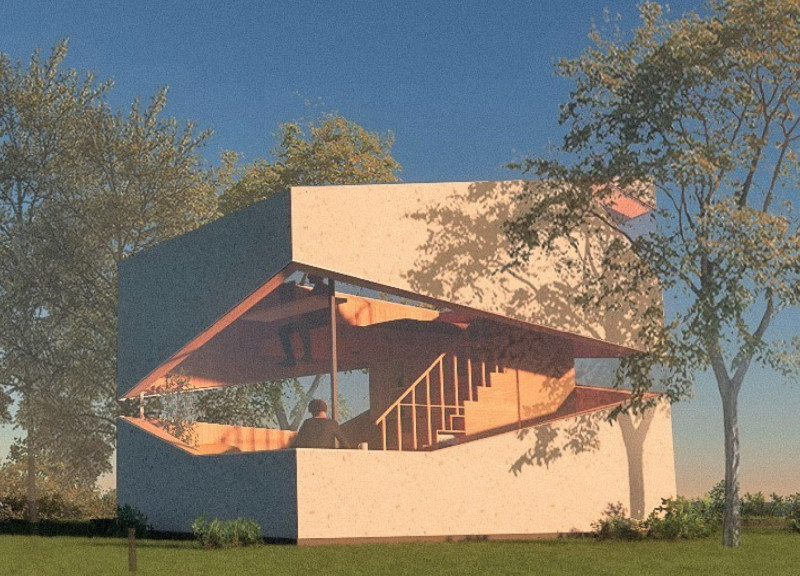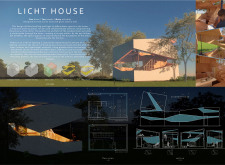5 key facts about this project
At its core, the LICHT HOUSE serves as a microhome designed for two inhabitants. It emphasizes an efficient layout that distinguishes between living and working areas while ensuring a sense of openness. This balance between private spaces and communal areas reflects a deep understanding of contemporary lifestyle demands, catering to the diverse activities that modern occupants engage in.
The unique architectural design employs a combination of prefabricated timber elements and reinforced concrete, showcasing a commitment to both durability and aesthetic appeal. The use of natural materials allows the architecture to resonate with its environment while promoting sustainability. Glass features prominently in the facade, maximizing natural light and creating uninterrupted views of the landscape. This emphasis on transparency not only enhances the occupants’ connection with nature but also contributes to a more inviting atmosphere within the home.
One of the most notable design approaches of the LICHT HOUSE is its innovative manipulation of light. Strategic placements of windows and light strips along the rooflines ensure that every corner of the interior is illuminated throughout the day. This thoughtful consideration of light reduces reliance on artificial sources, promoting energy efficiency and enhancing the overall quality of living within the space.
The modular design of the house is another significant aspect worth discussing. By using prefabrication techniques, the LICHT HOUSE minimizes construction waste while also allowing for portability. This adaptability makes it an appealing choice for urban settings where space is at a premium. The architectural design addresses the growing demand for sustainable housing options, reflecting a broader trend towards responsible living and environmental consciousness.
In terms of spatial organization, the LICHT HOUSE distinguishes itself through its functional zoning. The layout facilitates a seamless flow between areas designated for work and relaxation, fostering an atmosphere conducive to both productivity and comfort. The use of insulated wall panels ensures energy efficiency throughout the home's design, creating a comfortable indoor climate regardless of external weather conditions.
The architectural details of the LICHT HOUSE, from the angled exterior to the carefully selected materials, underscore the attention to functionality that characterizes the project. The lightweight timber elements used for structural purposes not only contribute to a modern aesthetic but also facilitate a dynamic interaction with the environment. This design philosophy champions a contemporary interpretation of living spaces that prioritize openness and interaction.
For those interested in a thorough understanding of the LICHT HOUSE, exploring the architectural plans and sections offers valuable insights into its design principles. The architectural designs reveal the logic behind the spatial arrangements and material choices, providing a clearer picture of the thought processes that guided the project’s development. Each aspect has been meticulously considered to ensure that functionality and aesthetics coexist in a meaningful way, reinforcing the architectural narrative established throughout the design process.
In summary, the LICHT HOUSE stands as a testament to modern architecture’s potential to create harmonious living spaces that cater to the complexities of contemporary life. By prioritizing light, sustainability, and adaptable design, this project sets a benchmark for future architectural endeavors. Readers are encouraged to delve deeper into the project presentation to discover more about the LICHT HOUSE's architectural plans, sections, and innovative design ideas that define this remarkable project.























